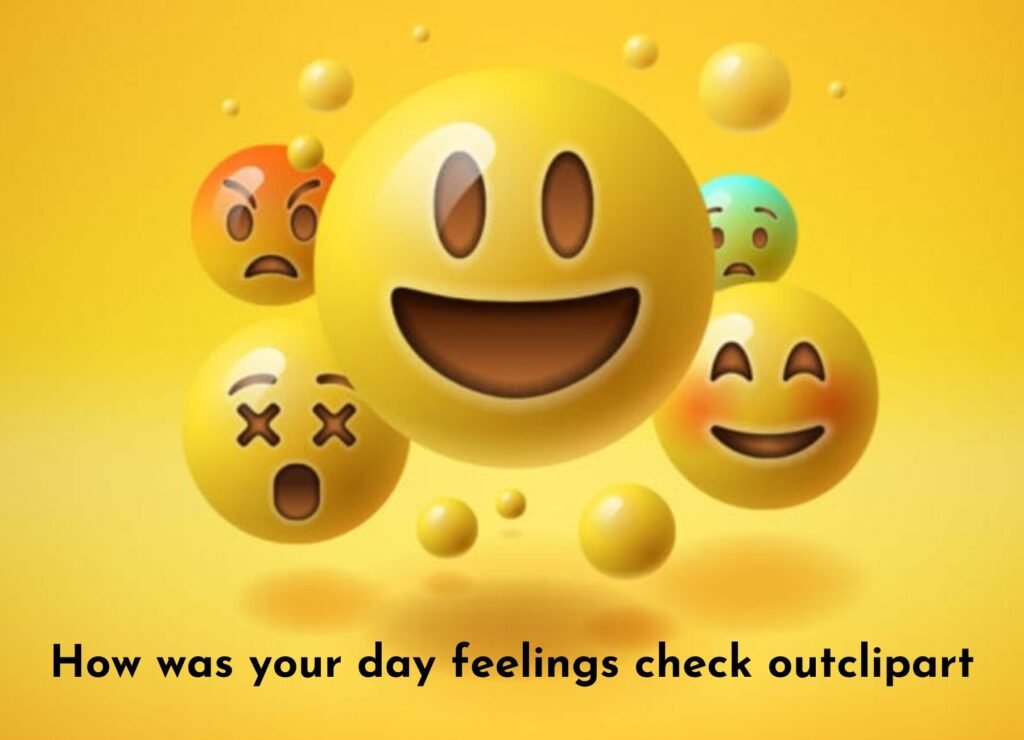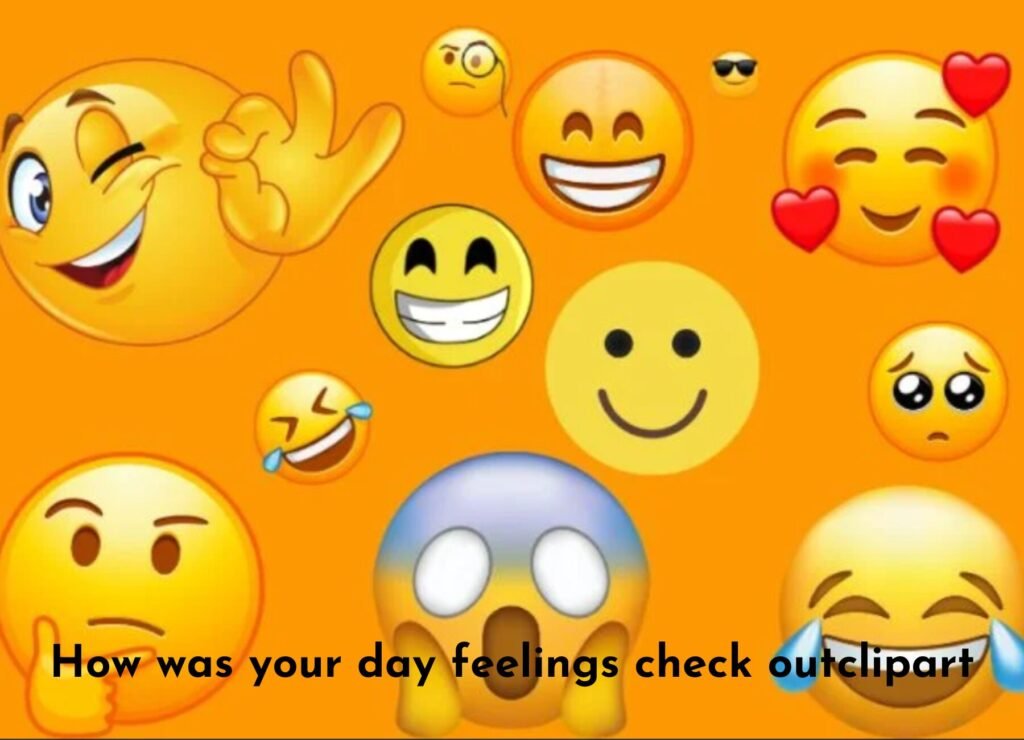Introduction
Have you ever paused to consider how was your day feelings check outclipart your day truly felt? Life can sometimes feel like a whirlwind, leaving us with little time to check in with our emotions. However, understanding our feelings is vital for mental wellness. This is where the concept of “How was your day feelings check outclipart” comes into play. Imagine having a visual tool that helps articulate those daily ups and downs– a simple yet powerful way to navigate emotional landscapes.
Exploring these emotions can lead to greater self-awareness and communication with others, whether you’re feeling joyous, anxious, or somewhere in between. So grab a cup of tea or coffee as we dive deep into the world of feelings and discover how clipart can be an unexpected ally on this journey!
The Importance of Checking in With Your Feelings
Checking in with your feelings is a crucial aspect of emotional health. Life can be hectic, and we often push our emotions aside to tackle daily tasks. This neglect can lead to stress and overwhelm.
When you take the time to reflect on how you’re feeling, you become self-aware. Understanding your emotional state helps you recognize patterns that may affect your well-being.
Moreover, acknowledging your feelings fosters better relationships. Knowing what’s happening inside makes you communicate more effectively with others. This transparency builds trust and connection.
Regularly checking in also promotes resilience. It allows us to process experiences rather than bury them deep within. By facing our emotions head-on, we equip ourselves with tools for coping and growth amidst life’s challenges.
What is the
Checking in with your feelings is a vital practice for mental health. It allows you to assess your emotional state and understand what’s happening.
At its core, it involves asking yourself how you feel at various points throughout the day. This simple yet powerful question can lead to deeper self-awareness.
Feelings are often fleeting but can hold significant power over our actions and decisions. By acknowledging them, we create space for better emotional management.
Using tools like clipart designed for this purpose adds a visual element that resonates with many people. These images serve as prompts, guiding individuals toward a more profound exploration of their emotions.
Such an approach helps bridge the gap between thoughts and feelings. It encourages us to articulate what may be difficult to express verbally or even internally.
Exploring Different Emotions and their Meanings
Emotions are complex yet fascinating elements of our human experience. Each feeling carries a unique message, offering insights into our inner world.
Joy is often seen as the ultimate emotion. It signifies happiness and fulfillment, reminding us to cherish life’s beautiful moments.
On the other hand, sadness can feel heavy but serves an important purpose too. It invites reflection and encourages healing from past wounds.
At first glance, anger might seem negative. Yet when channeled constructively, it can be a powerful catalyst for change.
Fear holds a dual role– protective yet paralyzing. Acknowledging fear helps us confront challenges head-on or find safety in retreat.
Surprise adds spice to life, keeping things fresh and unpredictable. Understanding these emotions allows for deeper connections with ourselves and others, enriching our daily interactions significantly.
How to Use the
Using the “how was your day feelings check outclipart” can be a simple yet effective way to gauge emotions. Start by selecting visuals that resonate with you or your audience. This might include smiley faces, neutral expressions, and sad emojis.
Display these images in a comfortable space– perhaps on a bulletin board or as part of a digital presentation. Encourage interaction by asking friends or family members to point out which image reflects their mood for the day.
You can also incorporate this clipart into journaling practices. Print them out and attach an emotion next to each day’s entry, making it easier to identify patterns over time.
Using these visual cues serves not only as an icebreaker but fosters deeper conversations about emotional well-being. The more you engage with these visuals, the more tuned you’ll become to your own feelings and those of others around you.

Encouraging Communication and Self-Reflection with the Clipart
Using clipart can be a powerful tool for encouraging communication and self-reflection. Visuals often evoke emotions that words sometimes struggle to express. When you present different images representing feelings, it opens up avenues for dialogue.
Consider using these visuals in family discussions or classroom settings. They serve as prompts that allow individuals to articulate their day-to-day experiences more clearly. By choosing an image that resonates with them, people can share what they feel without the pressure of finding the right words.
Self-reflection becomes easier when paired with imagery. Encouraging someone to pick a clipart piece each day fosters mindfulness about their emotional state. It allows for deeper insights into patterns over time, leading to greater emotional awareness and growth as they explore how their feelings change daily.
Engagement through clipart transforms ordinary conversations into meaningful exchanges filled with understanding and empathy.
Incorporating the Clipart into Daily Routine for Mental Wellness
Incorporating clipart into your daily routine can be a simple yet effective method for enhancing mental wellness. Start your mornings by selecting a piece that resonates with how you feel. This visual cue can set the tone for your day.
Throughout the day, take moments to pause and reflect on different emotions. Use varied clipart images to represent specific feelings you encounter– joy, frustration, or calmness. Engage with these visuals during breaks or quiet times.
Evening reflections are valuable too. Choose a clipart image that captures your overall mood as you wind down. This practice encourages mindfulness and self-awareness, allowing you to process experiences more deeply.
Share chosen images with friends or family members to spark conversations about feelings. Engaging in discussions can foster connections and build emotional understanding among loved ones.
Conclusion
Checking in with your feelings has never been more vital. Utilizing tools like the “how was your day feelings check outclipart” can enhance emotional awareness and foster deeper connections. By recognizing and exploring our emotions, we pave the way for effective communication and self-reflection.
Incorporating this clipart into daily routines can be a game-changer for mental wellness. It serves as a simple yet powerful reminder to pause, reflect, and engage with our emotional landscape. By making time for this practice, we cultivate resilience and understanding within ourselves and among those around us.


